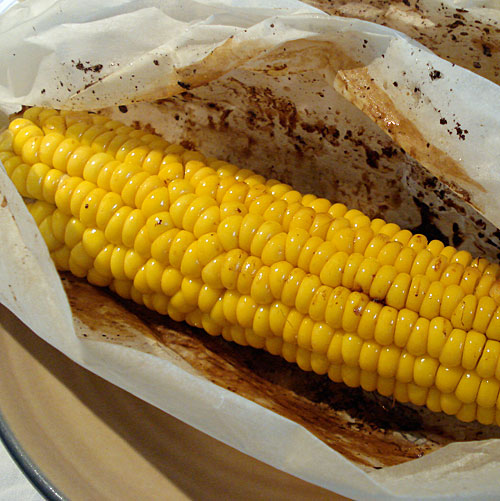
I have to admit that I've been quite taken aback by how popular the new potatoes with butter and soy sauce recipe has been. Butter and soy sauce are so familiar to me as a tasty combination that I hadn't quite realized that it would be new and exciting to a lot of people.
Anyway, here's another extremely simple yet delicious way of using this magic combination on another summer vegetable - sweet corn. Here in Europe, eating corn on the cob is a relatively new custom imported from the U.S. - corn around here is either dried and ground up (as polenta and so on), or used as animal feed. So it's not always possible to buy great, very fresh sweet corn. This treatment can perk up even an ordinary supermarket-bought corn on the cob, and will really shine with corn that you've just picked from your own garden.
Filed under:
japanese vegetables summer
[From the archives: This eggplant/aubergine dish is really nice served cold, though it can be served warm too. It doesn't heat up the kitchen since it's made in the microwave (yes, the microwave, and it works great!) so it's great to make on a steamy hot summer evening, with in-season eggplant. Originally published July 2007.]
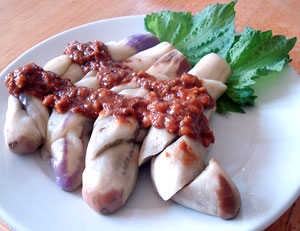
Here is another summer dish. I love eggplants (aubergines), but cooking them without using a lot of oil can be a bit tricky. I read about this method of steam-cooking eggplants in the microwave in a Japanese magazine some time ago, and ever since it's one of my favorite ways of preparing these rather spongy vegetables - they're done in just 5 minutes without heating up the kitchen, which is hard to beat on a hot summer's day. The whole dish takes less than 10 minutes to prepare.
Here they are served cold with a spicy peanut sauce, which makes it a very nice vegetarian/vegan main dish. Serve with rice or cold noodles.
Filed under:
japanese lighter vegetarian summer vegan
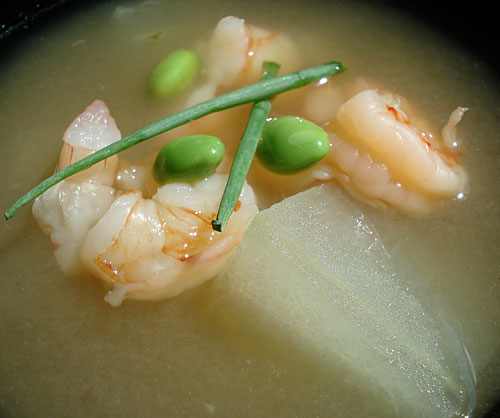
These days, the house generally looks like a warzone because of the packing, and I am not in the mood for involved cooking. So I'm making very simple bentos, and mostly one-dish/one-pot type of things for dinner. A great one-pot meal is soup of course, but it is also summer, when we aren't always in the mood for a steaming hot bowlful.
The answer is chilled soup that can be made ahead and just taken out at dinnertime. This one is really easy to make too, which is a big plus. Winter melon has a inherently cooling quality according to old (Chinese) medicine, so this is really nice to have on a warm evening.
Filed under:
japanese soup summer seafood
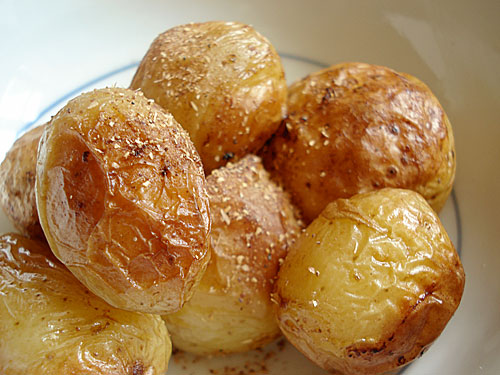
A very easy way to treat yourself to tiny new potatoes.
Filed under:
japanese potatoes summer produce
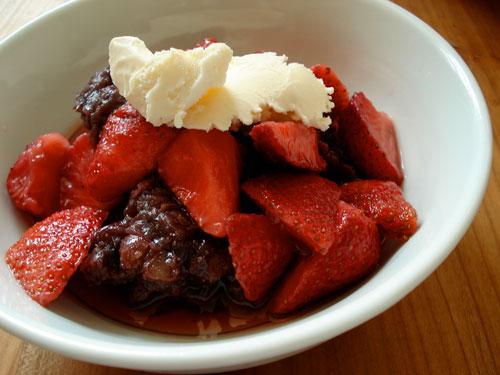
There are some food combinations that you think just shouldn't belong together, but do so well. Strawberries with sweet beans? Surely not, you think, until you taste an ichigo daifuku - a strawberry wrapped in some azuki an and thin gyuuhi, a dough made of rice. I've had ichigo daifuku on my mind lately but have been too lazy to make the dumplings. This is a very easy alternative. Arguably it's even better.
Filed under:
dessert japanese legumes summer vegan wagashi
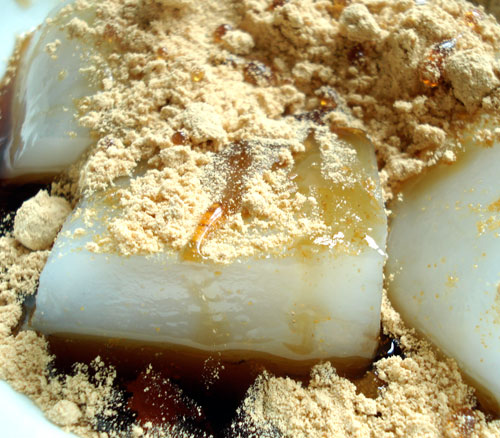
I wrote about the use of kuzu powder in the _goma dofu_ (sesame tofu) recipe. This time it's a very traditional, simple sweet dish using kuzu.
Kuzumochi are sticky 'mochi' cakes made with just kuzu powder, sugar and water. The texture is somewhere in between gelatin and mochi made from rice flour - wobbly but not too sticky. It's traditionally served chilled, so it makes an interesting, gluten free (and vegan) summer dessert.
Filed under:
dessert japanese sweet summer vegan gluten-free wagashi
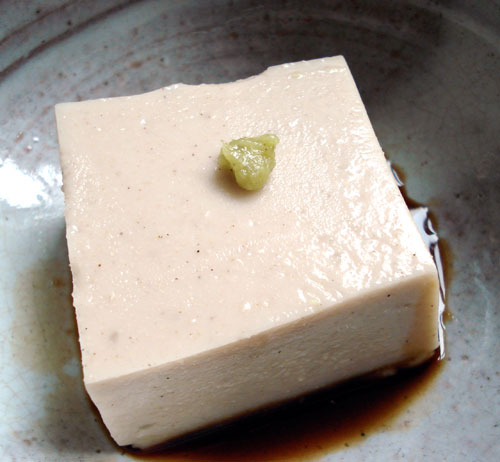
There are some dishes in Japan that look and have a texture like tofu, but are not tofu in the traditional sense; that is, they're not made from coagulated soy milk. One of these not-tofu tofus is goma dofu (ごま豆腐)or sesame tofu. Goma dofu is made from three simple ingredients: ground sesame paste, water, and kuzu or kudzu powder.
Filed under:
japanese vegetarian vegan gluten-free
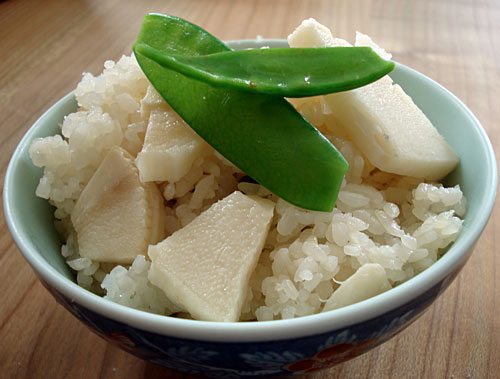
There are two Japanese vegetables that I can't get fresh here that I miss very much. One is burdock root or gobo; the other is bamboo shoot or takenoko (竹の子 or 筍). Bamboo shoots are very much a spring-only vegetable, much like asparagus, so around this time of year I always get a craving for the crunch and subtle flavor.
Filed under:
japanese vegetables spring rice vegan produce
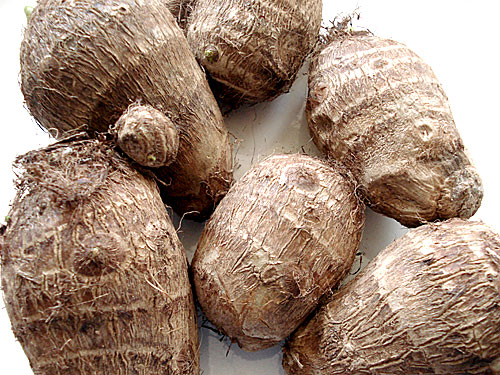
How to prepare that hairy looking beast, the taro root or satoimo.
Filed under:
basics japanese vegetables vegan
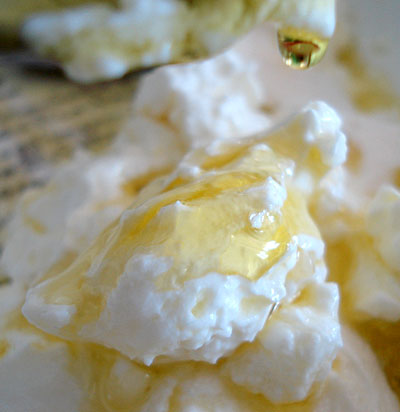
Hugh Fearnley-Whittingstall has an article about how to make yogurt (or as they spell it in the UK, yoghurt) in the Guardian. I did not want to go to the trouble of making yogurt from scratch, but I had a big pot of plain yogurt that needed to be used up so I made a sort of variation on the yogurt cheese balls further down on the page.
Yogurt cheese, in case you are unfamiliar with it, is just plain yogurt that has been drained of much of its liquid. To make it, just line a sieve with some porous cloth like cheesecloth, muslin, a coffee filter or even a couple of paper towels, spoon the yogurt in, and put the sieve with a bowl underneath in the refrigerator for at least a few hours. The more you let it sit, the drier it will become.
I strained about 2 1/2 cups of yogurt mixed with 1 teaspoon of sea salt from Friday evening to Sunday morning, by which time it had become the consistency of whipped cream cheese. I put this into a bowl, grated one garlic clove over it and drizzled on some extra virgin olive oil and mixed it up. It was the perfect spread for freshly baked hot savory scones.
I've never been a big fan of very sweet yogurt, so this savory yogurt spread may make more breakfast appearances.
Filed under:
breakfast party food dairy vegetarian
Pages